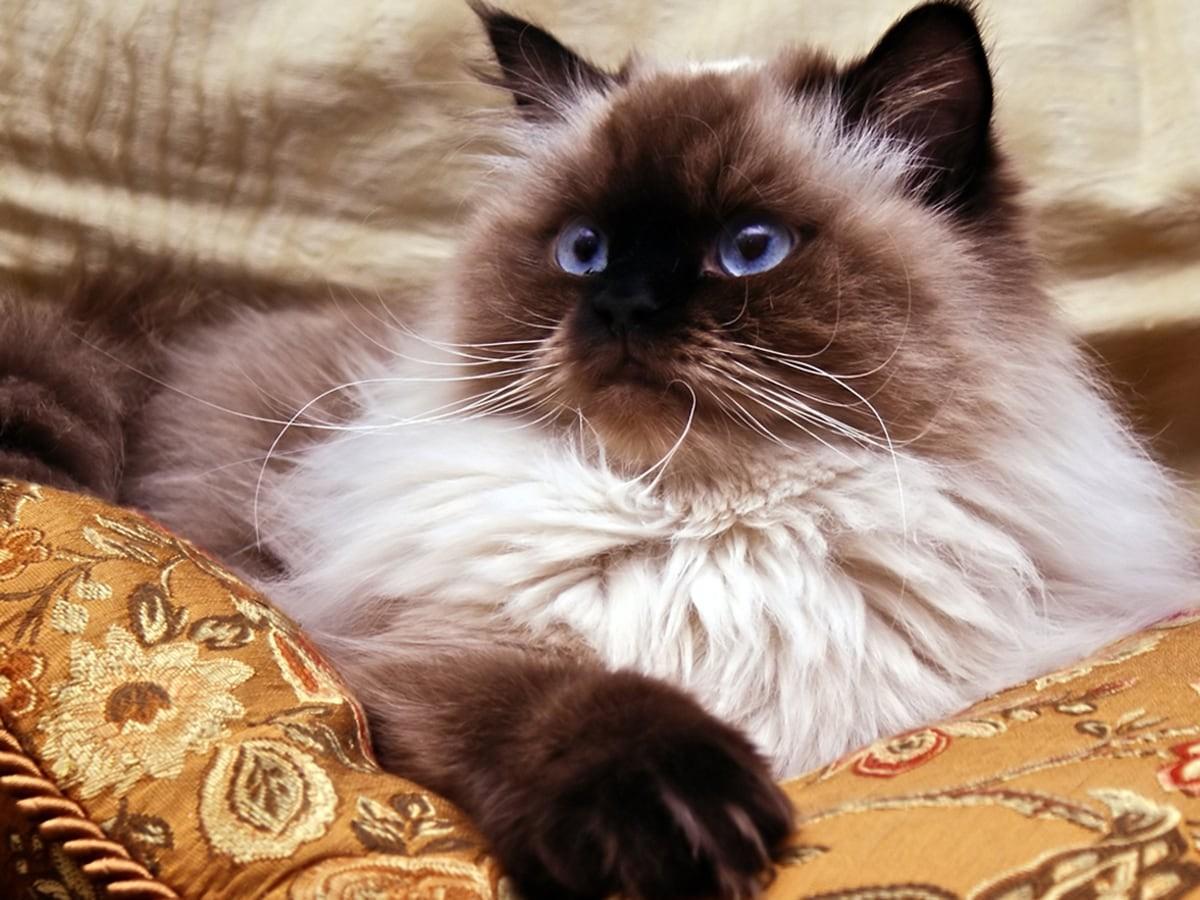
Himalayan Cat
Himalayan cats, often compared to their close cousins, the Persian cat, are gentle, loving lapcats with some potential for playfulness. Their demeanor is overall quiet and calm. This cat breed is beloved for its balanced personality that fits easily into any living space or lifestyle.
Breed Profile
Height
9 - 11
Inches
Weight
7 - 13
Pounds
Life Span
12 - 15
Years
Health
health
Polycystic Kidney Disease
What is it?
Polycystic Kidney Disease (PKD) is a commonly inherited disease present at birth but rarely detectable until later in a cat’s life (around age seven or older).
Clinical signs:
Nausea, vomiting, frequent urination, high blood pressure, weakness, depression, excessive thirst, loss of appetite, weight loss, lethargy
Treatment:
Medications, potassium supplements, iron supplements, fluid therapy, special diets
Other risks:
This is a chronic condition with no known cure. Therefore, treatment only manages symptoms to improve quality of life. Kidney failure commonly occurs around 7 years of age or later.
Eligible vet bill
$650
*Hypothetical reimbursement examples illustrate reimbursement of an eligible vet bill at the noted reimbursement rate, assuming the annual deductible had already been satisfied and the annual coverage limit has not yet been met. Annual deductible, co-insurance, benefit and coverage limits, and exclusions may apply. Eligibility may vary. Visit https://spotpetinsurance.ca/sample-policy for full terms. For Canada enrollments only, reimbursement rate is based on the pet's age.
health
Cataracts
What is it?
A cataract is a cloudy or opaque lens in the eye that hinders vision or leads to blindness.
Clinical signs:
Difficulty seeing, cloudy or opaque eyes
Treatment:
Surgery (phacoemulsification), medications (corticosteroids), eye drops
Other risks:
Symptoms need to be managed if surgery is not possible to prevent Glaucoma
Eligible vet bill
$2,000
*Hypothetical reimbursement examples illustrate reimbursement of an eligible vet bill at the noted reimbursement rate, assuming the annual deductible had already been satisfied and the annual coverage limit has not yet been met. Annual deductible, co-insurance, benefit and coverage limits, and exclusions may apply. Eligibility may vary. Visit https://spotpetinsurance.ca/sample-policy for full terms. For Canada enrollments only, reimbursement rate is based on the pet's age.
Personality
Intelligence
Himalayans are moderately intelligent cats. While they might not learn tricks as quickly as some other breeds, they are playful and curious, enjoying interactive toys and puzzle feeders.
Personality
Himalayans are known for their sweet, gentle, and affectionate nature. They are often described as lap cats, enjoying cuddles and attention from their loved ones. They are relatively calm and quiet, but do have bursts of playful energy.
Lifetime Care
Lifetime Care
Himalayans typically have a lifespan of 9-15 years. They are prone to certain health issues, including eye problems, respiratory issues, and polycystic kidney disease. Regular vet checkups and a balanced diet are essential for a long, healthy life.
Coat
Himalayans have a signature long, thick, luxurious coat that requires regular grooming to prevent matting. They come in a variety of "pointed" colors, described below.
Colors
Himalayans have a creamy-white body color with darker colors (points) on their face, ears, feet, and tail. Common point colors include:
Seal Point:
The classic and most recognizable Himalayan pattern. Seal points are a deep, rich brown, almost black in color.
Blue Point:
A cooler tone coat with bluish-gray points against the icy white body.
Chocolate Point:
Milk chocolate brown points with a warmer toned off-white body.
Lilac Point:
A softer, diluted coloration with frosty gray-pink points and a white body.
Flame Point (or Red Point):
Orange to reddish points with a creamy white body.
Cream Point:
Pale, creamy colored points against a white body.
Additionally, Himalayans can exhibit these markings:
Lynx Point:
Shows tabby-like stripes within the colored points.
Tortoiseshell Point (Tortie):
A combination of colors like cream and seal, or chocolate and red, appearing in a mixed pattern within the points.
Hypoallergenic
Himalayans are not considered hypoallergenic. Their long fur and tendency to shed can trigger allergies in some people.
Grooming
Daily brushing is recommended for Himalayans to manage their long fur, prevent tangles, and distribute skin oils that keep the coat healthy. Regular baths (every 4-6 weeks) are advisable, and occasional eye cleaning may be necessary due to their flat faces.
Training
Himalayans are receptive to training, particularly when positive reinforcement methods are used. Teaching basic commands like "sit" and "come", along with providing scratching posts and appropriate play outlets, can create a well-adjusted feline companion.
Ready to welcome a stunning Himalayan cat into your home? Understanding your role as their parent is key to a happy and healthy life together.
We're here to help! The Spot Pet Insurance Blog offers a wealth of resources to help guide you, from pet health and grooming to lifestyle tips. Explore our blog to learn more, and see if this breed is the right fit for you!
Sources:


